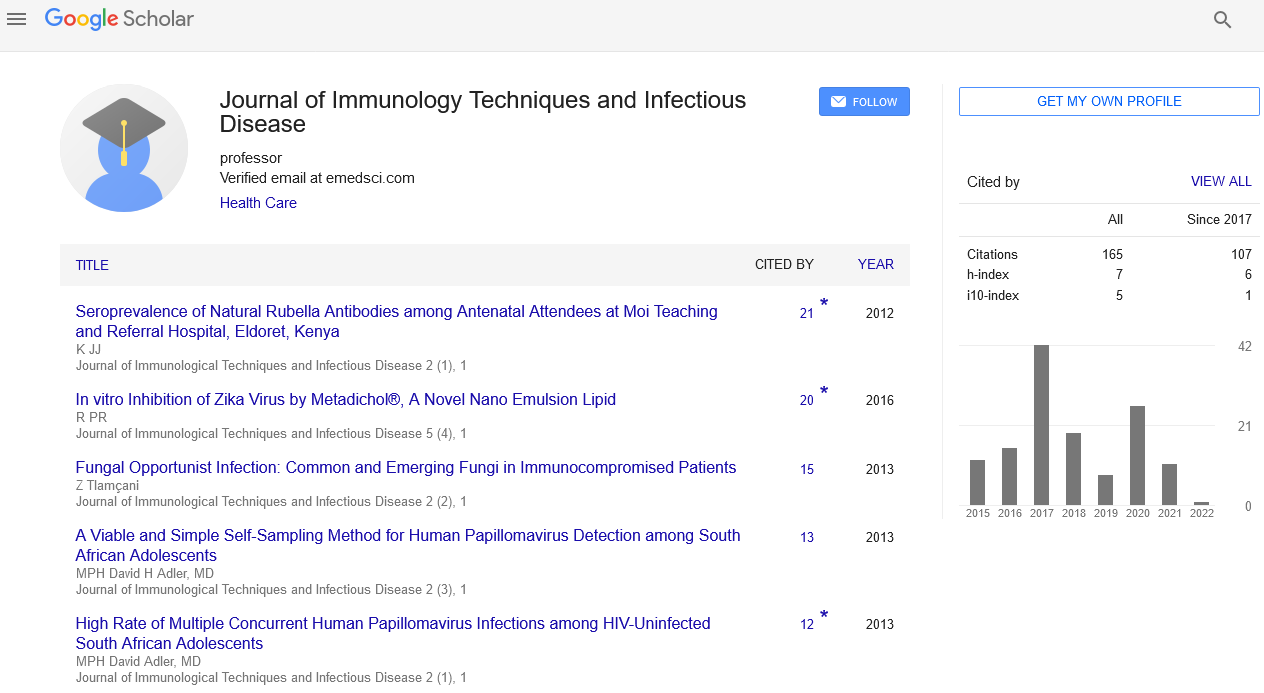Using lean six sigma approach to reduce central line associated bloodstream infections in Hammoud hospital university medical center
Ibrahim Zeid
MPH, MBBSS, Lebanon
: J Immunol Tech Infect Dis
Abstract
Statement of the Problem: CLABSIs are considered important problem among ICU patients as they are significantly associated with increased mortality and morbidity, increased hospitalization, and higher cost. During the calendar 2014, the CLABSI rates for medical surgical ICU patients were 3.25 per 1000 catheter days. Our goal was ZERO CLABSIs. The purpose of this study is to use the Lean Six Sigma process to reduce CLABSIs in adult ICU. Methodology & Theoretical Orientation: A multidisciplinary team of nurses, infection control officer, quality manager, residents and nurse educator utilized the Lean Six Sigma process improvement plan model to study the root causes and solutions to prevent CLABSIs, plan process improvements and to develop a plan for maintaining improvement over time. A retrospective chart review of all 2014 CLABSIs was conducted to identify infecting organisms, type of catheter, insertion site location and number days between insertion and infection. Registered nurses were interviewed to assess their understanding level of CLABSI prevention policy and asked for ideas about the causes of CLABSIS and what they could do to prevent these infections. Observations were made to evaluate compliance with central line insertion and maintenance Bundle. Findings: Lack of compliance with CL insertion policy by Hospital Residents was identified. Prior to the project, the CLABSI rate for adult medical ICU was 3.25 per 1000 catheter days. After launching the project, we achieved 0 rates. Compliance rate with central line insertion bundle was increased from 71% to 89%. Compliance rate with central line maintenance bundle was increased from insertion from 79% to 97%. Lesson learned: 1. Lean Six sigma allowed in depth examination of potential causes and solution to prevent CLABSIs. 2. To improve patient safety by eliminating life-threatening errors.
Biography
Responsible for planning, administration, and monitoring of consistent readiness of all quality management, regulatory requirements, and quality-improvement processes. As a member of the senior management team, initiates and oversees the development of a comprehensive quality/performance improvement program. In collaboration with hospital leadership, staff, medical staff leadership, and the Board of Trustees, directs and coordinates quality/performance improvement and hospital initiatives.
 Spanish
Spanish  Chinese
Chinese  Russian
Russian  German
German  French
French  Japanese
Japanese  Portuguese
Portuguese  Hindi
Hindi 
